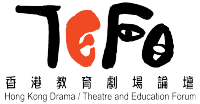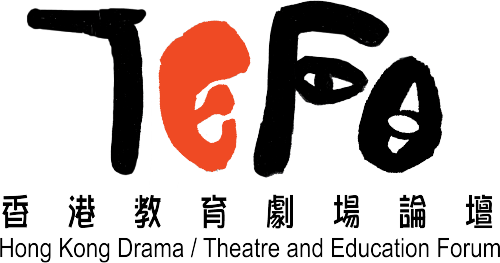Tag: Childrens’ Pedagogy
Artistic Transfiguration: Drama as Pedagogy during and after the COVID-19 Pandemic(Chinese) | DaTEAsia Vol. 10
This article examines the notion of transfiguration and analyses how process drama and arts education can help achieve elevated mental and spiritual states through transforming adversity to something that inspires beauty and deep meanings. This article illustrates this transfigurative function of drama education with an online pedagogical resources project which supports kindergartens with mainly drama education during and after the COVID-19 pandemic. The author accordingly points out that drama education can effectively address the emotional, spiritual, ethical and mental needs of teachers and young children in the context of post-pandemic education.
The Development of Drama Education in the Early Childhood Program in Malaysia: Embarked from the Life History of three Malaysian Chinese Drama Teachers (Chinese)|DaTEAsia Vol. 9
Drama education from the West has been developed in Taiwan and Hong Kong for many years. It has been introduced into Malaysian schools through Taiwan by Malaysian Chinese for 20 years. The study in the paper analyzes the drama-learning processes of three Malaysian Chinese kindergarten drama teachers. In examining the individual personal histories, the paper aims to review the development of drama education in early childhood education in Malaysia. Through interviews and the analysis of teaching plans and classroom observations, the research finds that three teachers’ early encounters with drama were somewhat related to the Chinese culture or school drama events. With their own personal interests, followed by informal or formal training and the need of their professional development, these three teachers have developed their own teaching styles. All of the three played crucial roles in the advancement of drama education in Malaysia. With the initiative of the new national ECE (Early Childhood Education) curriculum, there are needs to combine resources from different sectors, to promote dialogues among drama teachers or artists, or to make reference to curriculum models in ECE teacher-training programs in other Asian countries. These are necessary effects for solving problems encountered in the kindergartens and teacher training institutions.
From Drama Improvisation Experiences to the Discussion of Aesthetic Environments for Young Children in Hong Kong | DaTEAsia Vol. 7
Aesthetic development is one of the four primary goals in early childhood development in Hong Kong pre-school education. Its function is to stimulate children’s creativity and imagination. Yet, research in young children’s aesthetic environments in Hong Kong is few and far between. The author’s recent study indicates that young children acquire aesthetic experiences through the practice of “decisiveness, introspectiveness and empathy”. This paper takes the research findings further to examine the impact of aesthetic environments on children’s aesthetic development. Informed by theories in aesthetics, improvisational drama and education, the paper proposes that both the physical and metaphysical environments are crucial to facilitating children’s aesthetic experiences. In the metaphysical environment, teachers’ pedagogical perspectives and practices are the basic factors, and the paper further discusses the role of teacher, the pedagogical approach and orientation in it.
Story, Play and Enchantment: The Importance of Drama for Children in the Early Years of Education | DaTEAsia Vol. 5
This article is based upon a keynote address I was invited to give at the “International Conference for Drama Education for Young Children” which took place at Nanjing Normal University in June, 2014. In addressing the theme of the conference – Drama, Dream and Children – I chose to refer to two practical examples. My intention was to provoke some thinking about specific ways that drama can contribute to children’s social, moral and language learning, not in any exhaustive way but by drawing attention to some important considerations. In particular I wished to focus on the kind of drama work young children enjoy and are capable of and the crucial role of pedagogy in enabling this to happen.
“Teaching” Children to Play Theatre Games: A Collaborative Inquiry with a Student Teacher | DaTEAsia Vol. 4
In Hong Kong, early childhood educators have progressively emphasized the importance of play. However, it happens that play has long been seen not to be taught explicitly, or other it just to be taught to fulfill academic goals. Moreover, the promotion of play is also further hindered by socio-cultural factors and other general constraints in town. The authors, the teaching practicum supervisor (A1) and her student teacher (A2), believe that education reform should begin with teachers’ self-improvement, reflection and exploration of their classroom teaching practice. This paper has reported their collaborative inquiry on teaching strategies for children to play theatre games. The authors have borrowed the theories of movement instruction to tackle the children’s discipline problems arisen in the theatre games classroom. After reviewing and practicing the revised strategies, the authors, in turn, offer solutions to improve theatre game instruction in a new light by two strategies, namely decomposition of rules of games and the use of structured classroom discourse. As regard the student teacher, this collaborative inquiry has promoted improvement in relation to designing, demonstrating and skills guiding children to play theatre games, and other relevant teaching theories. At the same time, the author (A1) has been placed at a better position to comprehend the problems faced by novice and frontline teachers when using theatre games, from which she has further examined the content and methods of her teacher training.
Children Create Their Own Drama with the Help of the Teacher: An Action Research on the Curriculum Implementation of Theme-Integrated Drama in Preschools in the Mainland China|DaTEAsia Vol. 3
The action research conducted here on the curriculum implementation of Theme-integrated Drama in preschools in the Mainland China aims to find out how, with the guidance of the teacher, children create their own drama works by integrating their experience in drama expression, drama creation and drama performance. To implement the curriculum, different themed drama activities are often designed for different age groups; for example, “Trees and Birds” for the class of five to six year olds. Such activities include three phases. In the phase of drama expression, children in particular roles have an opportunity to express their views of the surrounding world. Then the children are encouraged to create plots and scenes around a conflict where their role is dramatized, and then to discover and solve problems. This is the phase of drama creation. In the last phase, previously acquired experience in drama expression and drama creation are integrated into the drama performance. Through that experience children gain a sense of accomplishment when presenting their own drama works in front of the audience.
Drama Appreciation in Children Aesthetic Education: A Case Study on Creative Drama|DaTEAsia Vol. 2
A case study adopted to investigate a teaching artist’s implementation of integrating creative drama as teaching strategies into the aesthetic education to promote drama appreciation in kindergarten. The purposes of the research included the exploration in the application of drama strategies in education curriculum, the feasibility on the usage of creative drama in inducing drama appreciation, and the resulting learning outcomes on students.
How Effective is a Drama-enhanced Curriculum Doing to Increase the Creativity of Preschool Children and Their Teachers?|DaTEAsia Vol. 2
In Hong Kong’s recent curriculum reform, creativity has been identified as a generic skill to be nurtured in our students of all levels in the key learning areas, including arts education. The present study evaluated the effects of a drama in education project on both students and teachers. Kindergarten and primary teachers took part in a 24-hour teacher training program on drama in education. Teachers also received support in lesson planning on drama-enhanced learning to the classes they were teaching. Students were randomly drawn from these classes to form the experimental group (83 kindergarten students) whereas 20 students from the same schools but were not taught by these teachers took part in the study as the control group. A total of 58 kindergarten teachers and primary school teachers completed both the pre-test and post-test. Significant differences were found in the teacher-perceived dramatics characteristics in the experimental group of students. Students who displayed more dramatics and creativity characteristics outperformed those with fewer characteristics in their verbal expression in story-telling. Significant positive effects were also found in the creative fostering teaching technique of teachers involved in the training. They encouraged their students to become independent and cooperative learners, accepted students’ ideas and provided them with try out opportunities. They also showed long term commitment to drama in education. Limitations and future directions are discussed.




